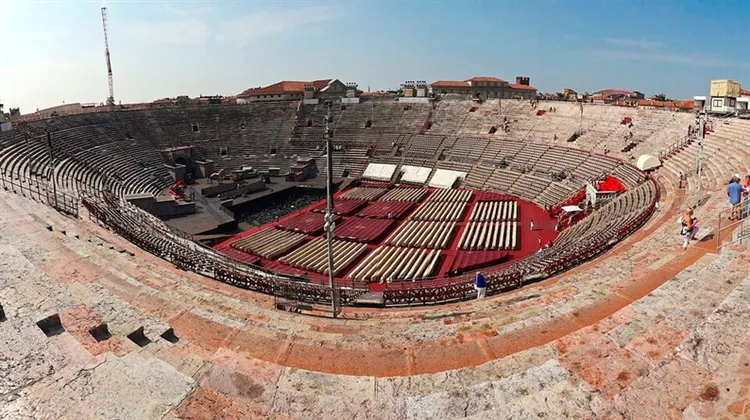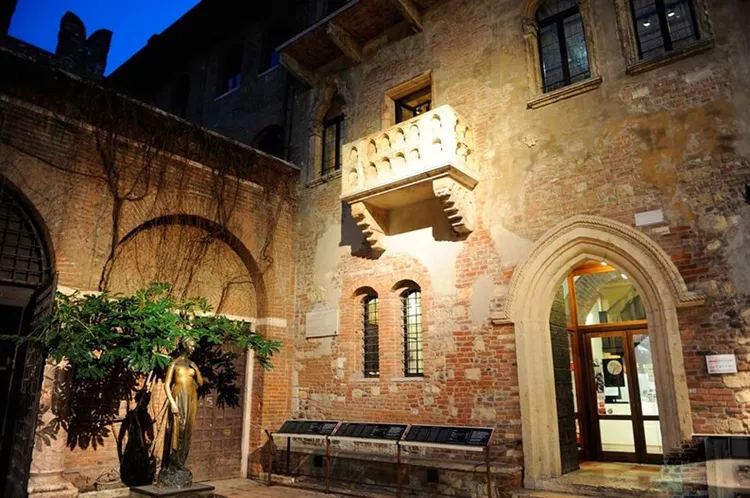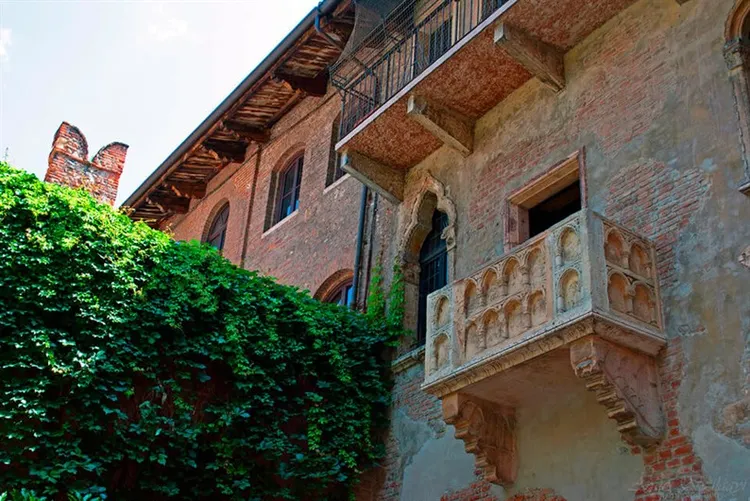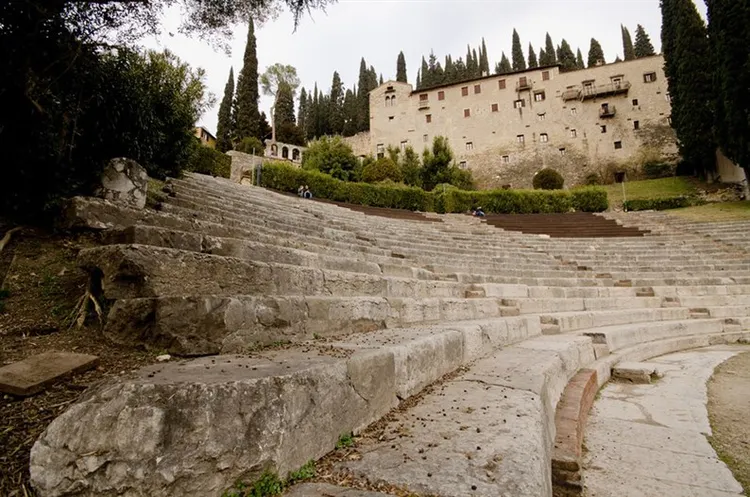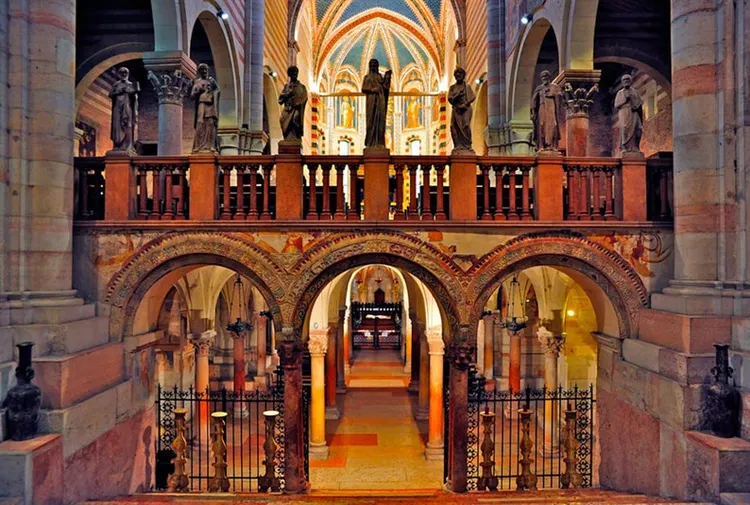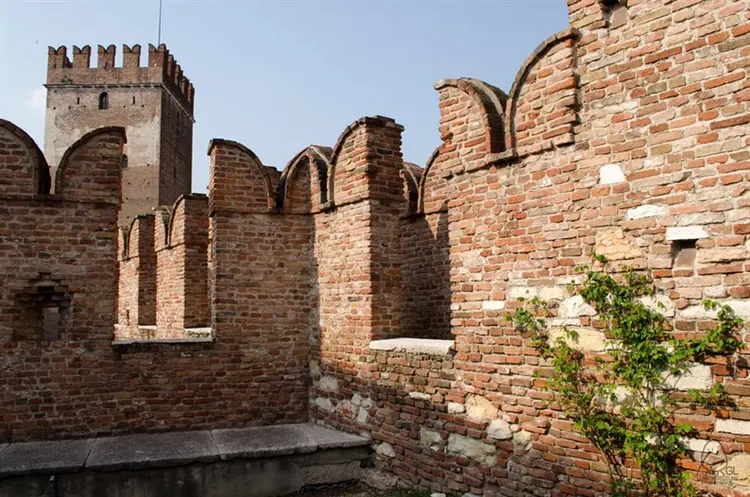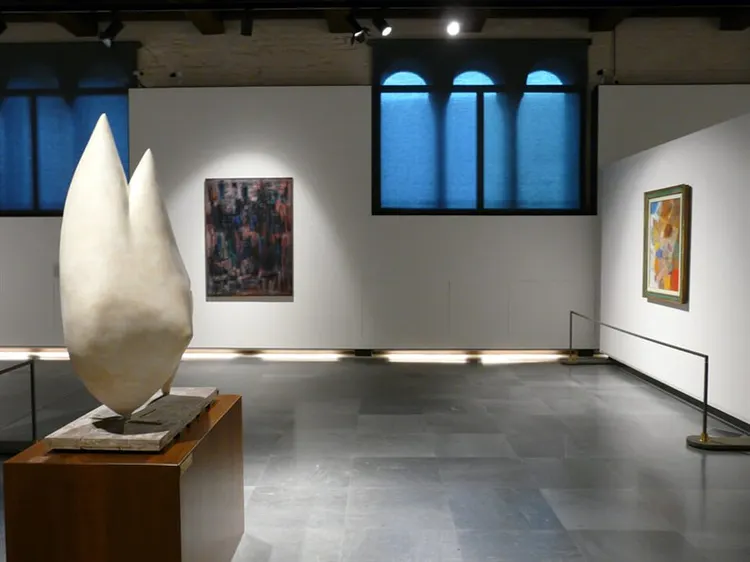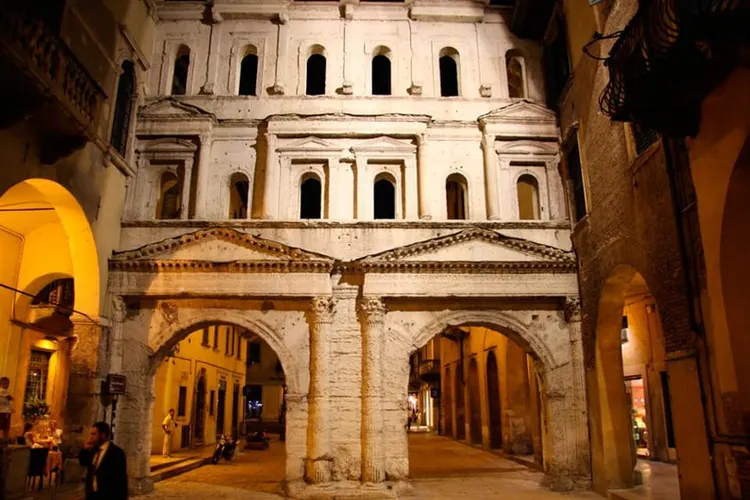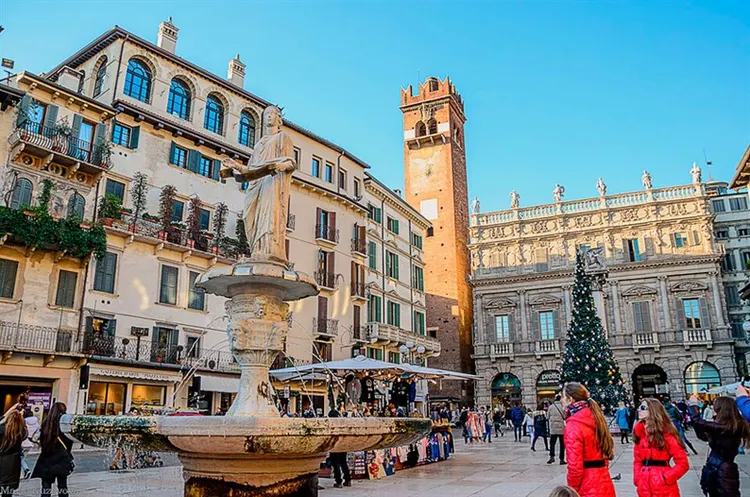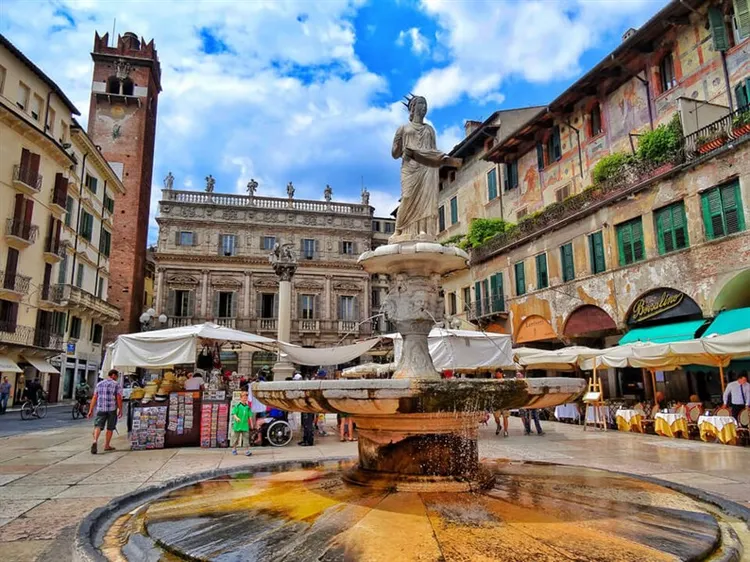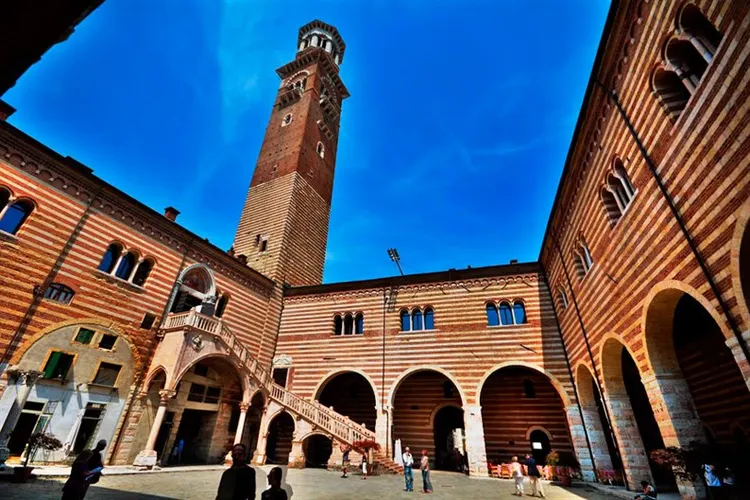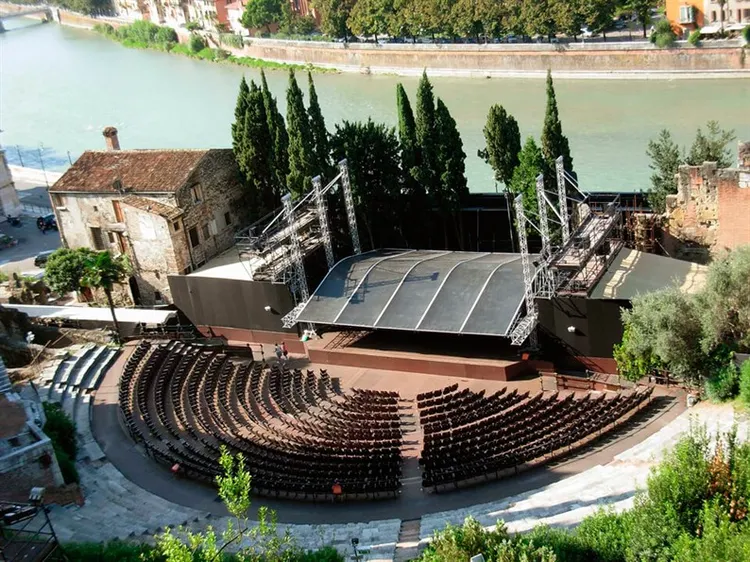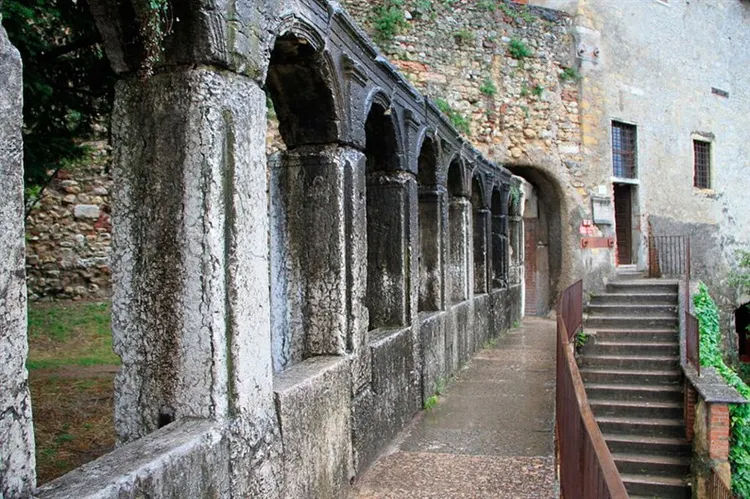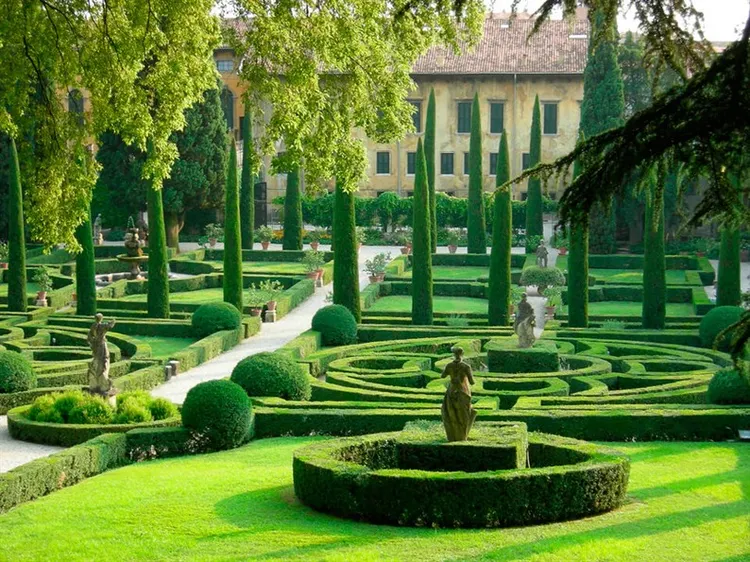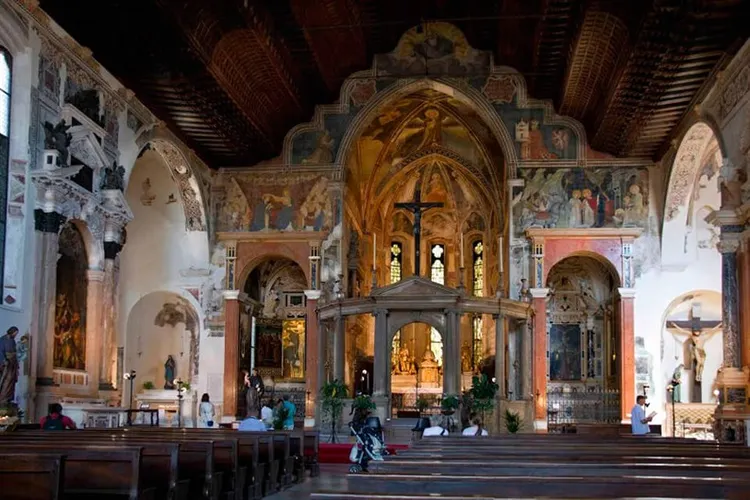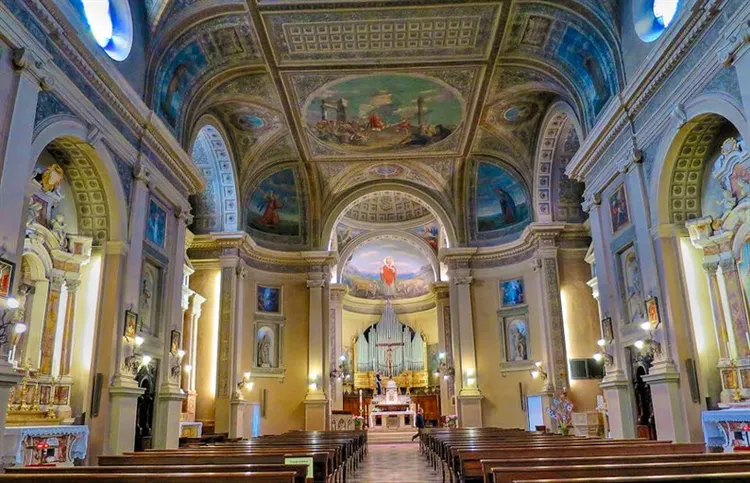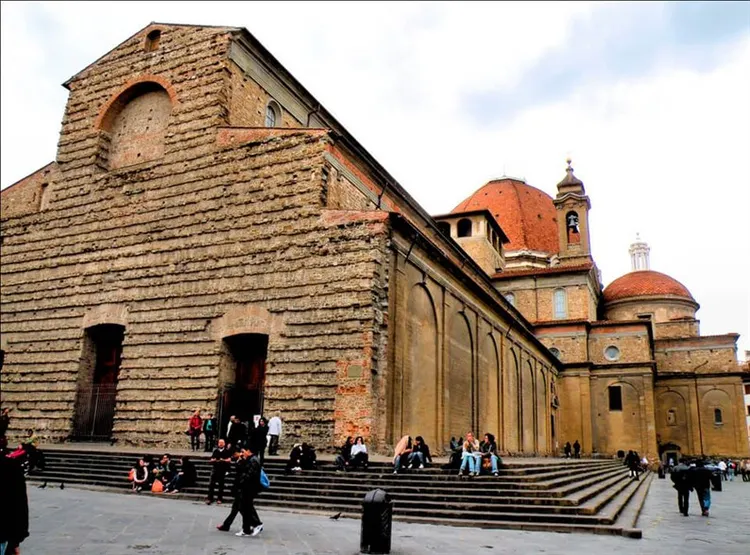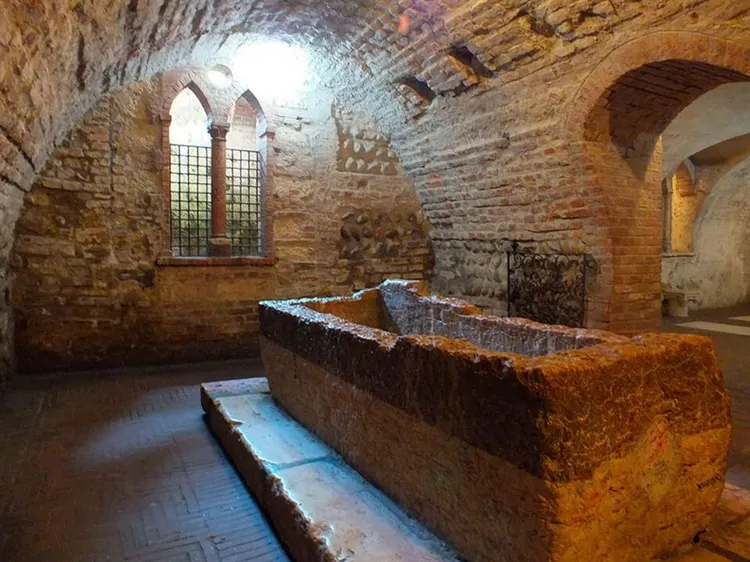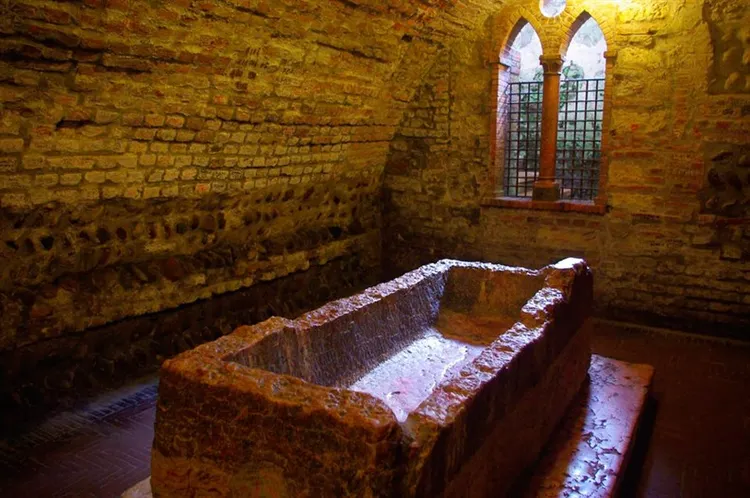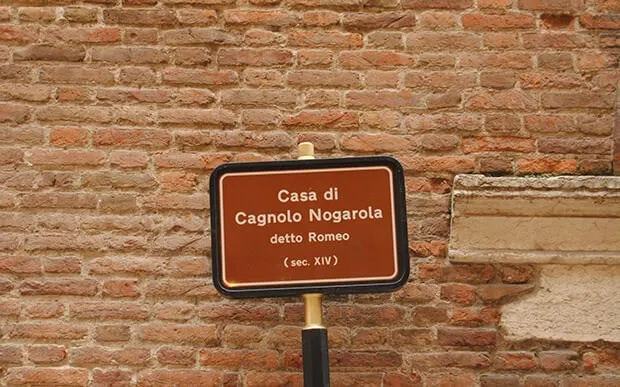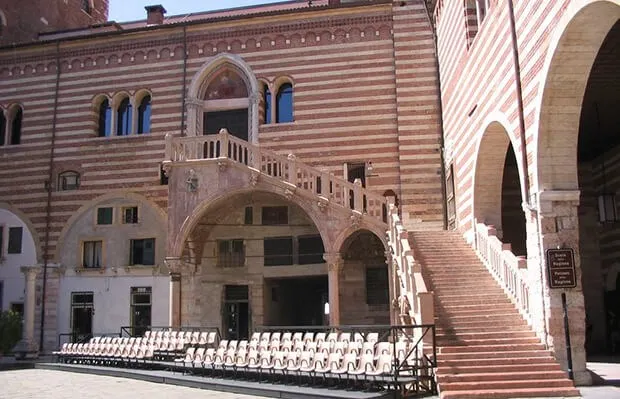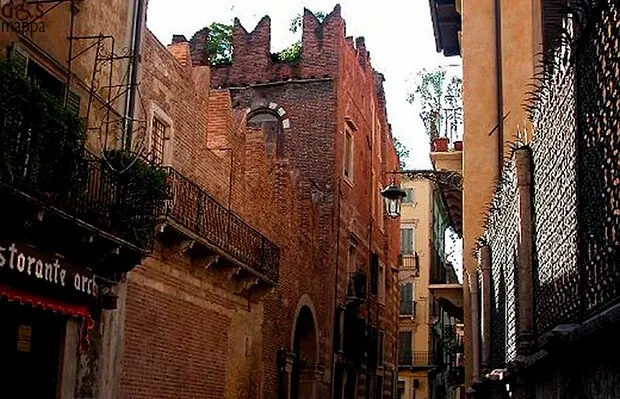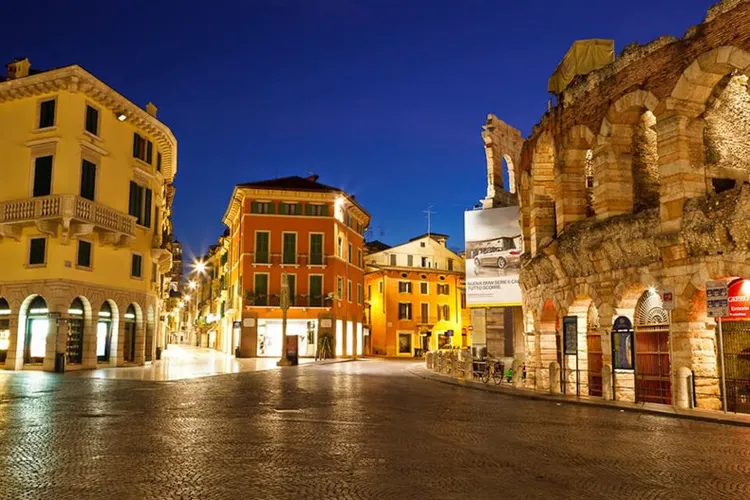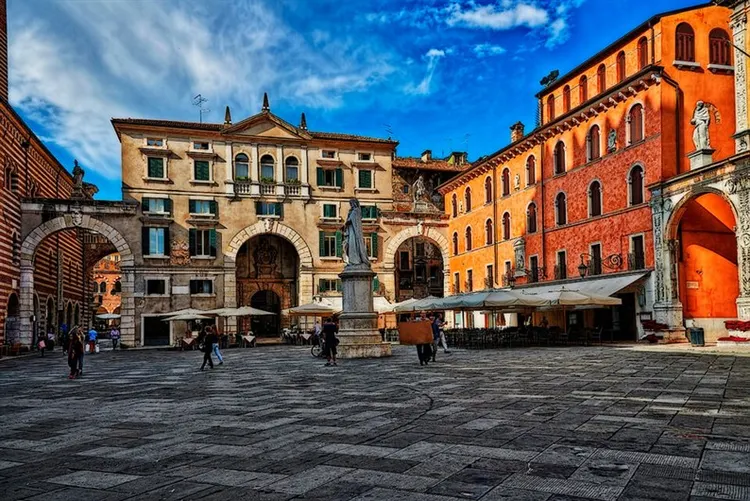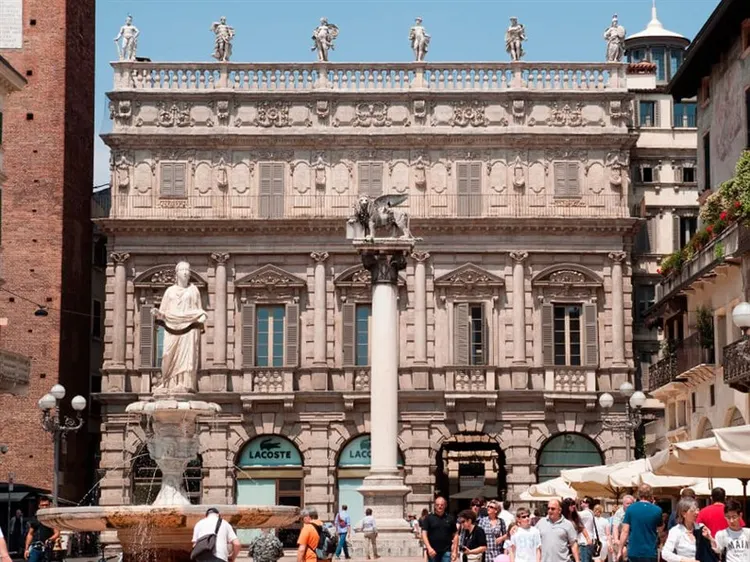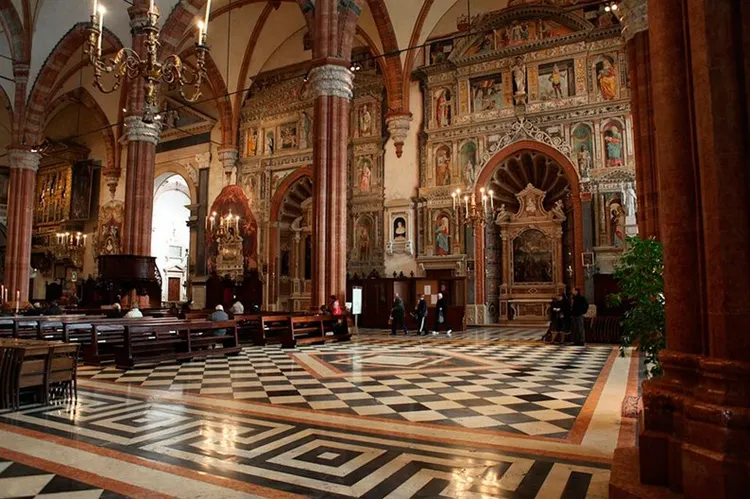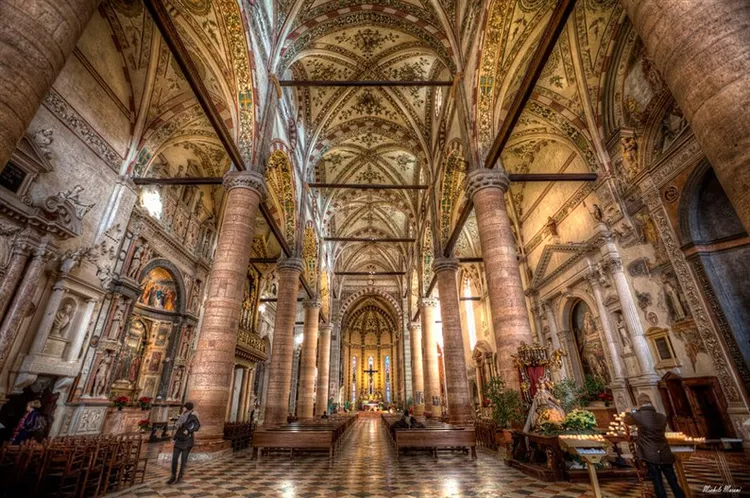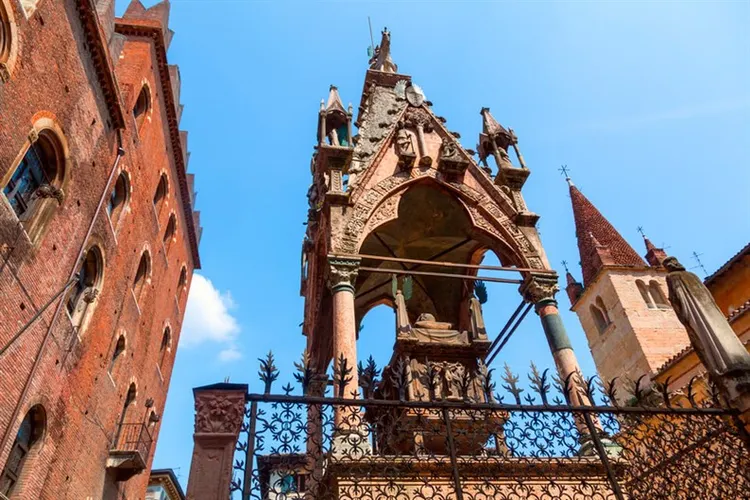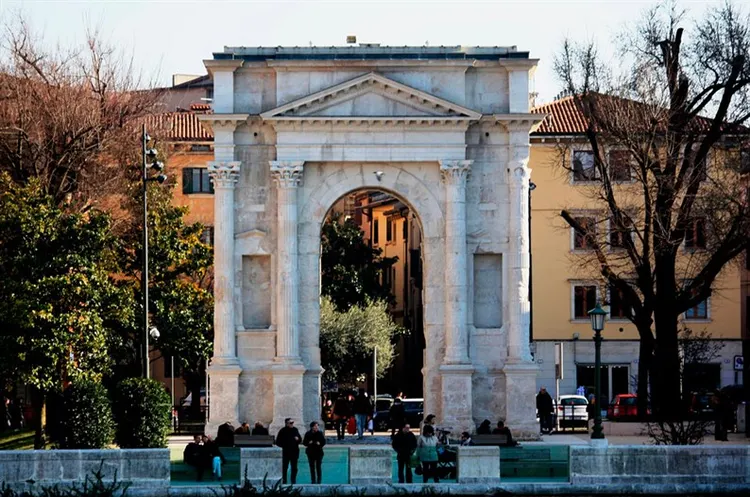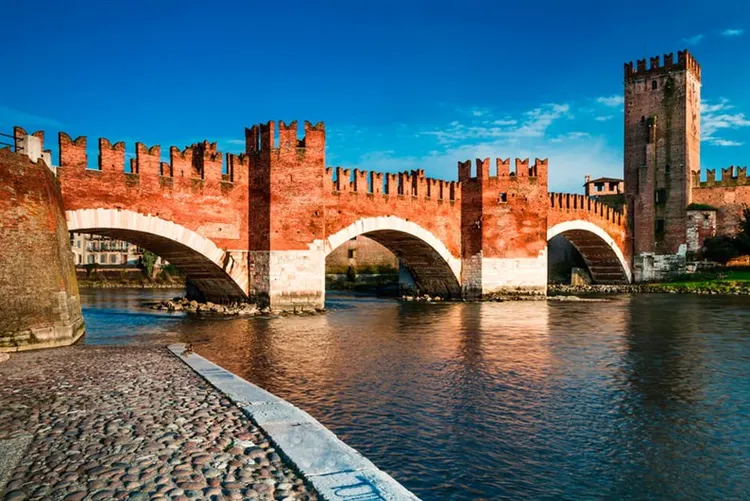Sights of Verona – 23 most interesting places
Verona, like many Italian cities, is famous for its interesting sights. This city is also often compared to Paris for its romantic atmosphere. Which is not surprising, because it was here, according to the idea of the great Shakespeare, that the events from the legendary sad story unfolded. However, this Italian city is famous not only for Juliet's house. An impressive historical heritage has been preserved here, thanks to which the city can successfully compete with Rome. So, especially for you, we have prepared an overview of the most interesting sights of Verona, which you should definitely see on your own.
Arena di Verona
This grandiose amphitheater was built by the ancient Romans around 30 AD. In the list of similar buildings, Arena di Verona is third in size. It is also considered one of the best preserved buildings of the ancient world. Once upon a time, residents of the city rushed here to see the famous gladiator fights and circus performances with their own eyes.
The strongest earthquake that occurred in 1117 did not pass without a trace. The amphitheater was badly damaged, but its importance in the life of Verona has not weakened. The Middle Ages brought here the fashion for public executions of heretics, festive festivities and competitions of knights. Since the 20th century, the Arena di Verona has become a venue for Italian opera performances. Today, theater performances are still held in the ancient walls of this amphitheater, and in summer you can even see an opera on its wall.
Juliet's house
Fans of Shakespeare's work should definitely visit this house built in the 13th century. Despite the fact that it is identified with the famous house of the Capulet family, in fact it belonged to the Cappello family. Throughout its existence, Juliet's House has changed several owners. In the 19th century, there was an inn here, but already in 1907 the building was very dilapidated, so the owners decided to put it up for auction. So, the house was bought by the municipality, after which a museum was set up in it.
However, even the connection with the Shakespearean play did not immediately bring him fame. Only after the restoration, the house acquired an appropriate romantic look, which aroused an unprecedented interest in it from tourists. The usual brick facade was complemented by Gothic elements and the famous “Juliet's Balcony”. Today, crowds of fans of the play and just tourists who find themselves in Verona flock here. Visitors do not bypass the bronze statue of Juliet, which stands in the courtyard. According to legend, if you touch it, you can attract good luck. Adults can view the house and patio for 6 euros, students for only 4.50 euros, and visitors who are under 14 years old can tour for 1 euro.
Archaeological Museum
Here you can see finds from all over Verona, as well as the surrounding area. Ancient tablets, ceramics, bronze and glass objects, statues, mosaics and much more are kept within the walls of the ancient monastery of St. Gerolamo. The Archaeological Museum of Verona is located on a hill with a panoramic view of the entire city. Some of the exhibits are artifacts found nearby at the site where the ancient Roman theater once was.
Individuals who donated their finds to the museum also helped replenish the museum's collection. Many of them were accidentally found on the streets of Verona, as well as in the river that flows in this area. For adults, the entrance to the museum will cost 6 euros, and for children even less – only 1 euro.
Basilica of San Zeno Maggiore
The Abbey of St. Zenon in the Middle Ages was a fairly solid monastic complex. Unfortunately, only the basilica, some cloisters, the church of St. Proclus and one tower have survived today. The Basilica of San Zeno Maggiore is rightfully considered one of the most magnificent Romanesque churches in all of Verona. For its construction, local volcanic tuff, which has marble inclusions, was used. The facade of the church is decorated with bas-reliefs recreating scenes of the Last Judgment.
Their author is the sculptor Brioloto, who also created the “Wheel of Fortune”, which is a rose window in the center of the basilica. The entrance is decorated with a portal made by the master Nikolo. The church houses an impressive collection, which includes works of art from various eras. As befits the place where Zeno of Verona was buried, there is a crypt here. The doors of the basilica are open to visitors daily, but the entrance, surprisingly, is paid – you will have to pay 5 euros for a ticket.
Castle of Castelvecchio
A list of Verona sights would not be complete without mentioning the Gothic castle of Castelvecchio. It was erected in the 8th century on the banks of the Adige River as a defense structure. Construction began in 1354, but the work was completed only by 1376. In those days, the noble Scaliger family ruled in Verona, who set up their residence in the castle, hiding within its walls from attacks by enemies and riots by local residents. Later, Castelvecchio became a dungeon for prisoners, and during the Napoleonic occupation it was used as an arsenal.
The public gained access to the building only at the end of the 19th century, which caused numerous reconstructions. Today it houses the city museum, opened back in the 1970s (it was founded about 50 years earlier, but left closed for a long time due to repairs). Here are medieval sculptures, masterpieces of painting, ancient weapons and ceramics. The ticket price, like in many other museums in Verona, is 6 euros.
Forti Gallery of Contemporary Art
Today, the fund of this gallery includes about 1.4 thousand exhibits, but at the time of its foundation there was only a small collection of art objects. It was collected at his own expense by a very wealthy local resident, and then donated to the city. Over time, the gallery was replenished thanks to private donations. Many exhibits date back to the 19th century, and only some of them are considered modern. The permanent exhibition of the Forti Gallery, which includes many works by Verona masters, was opened to the public in 2006. Today, this place is considered a solid exhibition center that attracts many tourists.
Porta Borsari street
This street is the personification of ancient Verona. The gate, which is located at the end of the street, was once part of the walls of the most ancient city. There are reliable facts that undeniably confirm that these gates were built in the first century. In such distant times, customs worked on Porta Borsari Street. Today, the name of the street reminds of this: “borsari” in Italian means “customs officer”. Fans of ancient history will undoubtedly like it here, as the street is a real medieval architectural monument of Ancient Rome.
Perhaps, only in this place it is possible to combine cultural rest with shopping. An incredible number of shops and boutiques are open to customers from morning until late in the evening. A small fountain, located on this street and so beloved by all tourists, will help you forget about the summer heat with its coolness.
Erbe Square
There are at least six names for this ancient square: fruit and herb forum, Dante square, Roman forum, square of herbs and fruits, Signoria square, fruit square. The rulers of Verona of that time from the Scaliger family made a significant contribution to the design and formation of the design of this square. From all sides this historical place is surrounded by palaces, buildings of the famous Renaissance. The walls of the buildings themselves are frescoes, the result of the creation of the great artists of that time. The walls of houses in the Renaissance were painted with different colors and have survived to this day in such a unique form. In the ancient Roman era, this area was the most important center of business and financial life.
All sides of the rectangular square were built in different periods of history by the great sculptors of that time. Nowadays, not a single generation of tourists is studying the life and history of the ancient center of civilization. Here you can see sculptures of Venus and Apollo, Jupiter and Hercules, Minerva and Mercury. In the center of the street is the active, although very ancient, fountain of the Madonna de Verona. The National Bank of Verona is located on the Grass Square. The facade of the building is decorated with Gibbelin battlements and an arched loggia. It is interesting that in the Middle Ages the first large financial corporations were located in the same building.
Of course, only in this square can the symbol of the Republic of Venice, which has dominated these places for several centuries, be located – this is a column with a winged lion. One of the main buildings located on the street is the Loggia of the Soviets or the Loggia of Giocondo, built at the very end of the 15th century. It is believed that the building was recreated according to the project of the Venetian monk Giocondo. It gained fame due to the fact that the memory of famous and important people of that time is immortalized here – sculptures of Nepos, Catullus, Vitruvius and Pliny the Elder rise on the roof.
Lamberti tower
The tower is located near the Fruit Square. It reaches a height of almost 85 meters and was built in the second half of the 12th century, in the Romanesque style. Later, at the very beginning of the 14th century, the upper part of the tower was destroyed by lightning. It was possible to restore the tower over the next millennium. It has reached our days in the form of a building made of different materials: tuff blocks and bricks from below; the top is marble.
The value of the tower in the ancient and middle ages for the people was enormous. It has several bells of various shapes. The big bell gathered residents for citywide meetings, the small bell notified everyone about the fire. The construction was sponsored by the Lamberti family. This is the most noble and prosperous family of that time. At the very top of the tower there is a platform for visitors, which offers a breathtaking view of Verona. The tower is located on Erbe Square and not far from the Scaligerian arches. The ticket price includes a visit to the latter. The ticket costs 3-4 euros. Viewing is available on weekdays from nine thirty to seven in the evening.
Roman Theater and Pietra Bridge
This ancient palace of culture is the most majestic theater in Northern Italy. Geographically, the building is located on the hill of San Pietro. This hill bears a common name with one of the bridges between which the theater is located. The San Pitro bridge is the epitome of care and respect for their own history and culture by the locals. Indeed, in 1945, the Germans mercilessly blew up this architectural monument during the offensive. However, caring residents of Verona, using old photographs and from the remains of the destroyed bridge, raised from the bottom of the river, were able to completely restore it. Here you can admire the landscape and landscapes of the city, which attracts photographers from all over the world.
The Roman theater was built in the first millennium. Due to its proximity to the river, the building was badly damaged by floods. Nowadays, you can see orchestras, which in ancient times were intended for very important people, caves, in the form of a semicircle with brick steps. Cavea is very wide, more than 100 meters wide. It is, as it were, supported by the hill of San Pietro itself, on the sides of which walls rise. In those distant ancient times, it was possible to walk along the wide terraces here. Now this huge area is occupied by one of the most famous castles – Castel Castle. Romano's ancient Romano theater surprisingly combines different styles: the ground floor is dominated by the Tuscan style; the second floor is dedicated to the Ionic style.
Giusti Palace and Garden
The villa, mansion or manor of the Giusti family was built in the Middle Ages in a classical style. Augstino Giusti built this villa for his family, according to his own idea. The individuality of this estate has been preserved to this day: unlike other Verona estates, Giusti Palace stands at the very foot, and the living quarters are located on the very first floor, a little higher you can find the courtyard. And the building is closed by a magnificent cypress alley leading to a terrace with a grotto and a belvedere.
According to the idea of the head of the Giusti family, on the site of gardens and vegetable lands, the famous Verona garden was erected with special care and attention – an island of pinnacles of unsurpassed beauty and unearthly grace. In the shade of cypress alleys, the most famous characters liked to dream: the Great Tsar Alexander, the Medici, the famous Goethe, who repeatedly mentions this in his works. Nowadays, every tourist has such a unique opportunity: to visit places that have preserved milestones of ancient world literature, history and culture. The exact address of the Museum and Garden: Via Giardini Giusti, 2. Doors for visitors are open from morning until seven o'clock in the evening, a ticket costs from seven euros.
San Fermo
Amazing ancient building. It combines two completely different buildings: at the bottom, the Romanesque style is the embodiment of the project of the monks from the very beginning of the second century; the top was built at the beginning of the fourteenth century and is strictly in the Gothic style. The upper part resembles the keel of a ship. An identical combination of styles will open to the eyes of travelers inside the church. The interior seems unreal, fabulous and attracts with its grandeur, wealth and a little mysticism.
Reliefs with scenes from the lives of saints, the famous frescoes of Martino, the fresco “Crucifixion” by Maxio, sarcophagi – all these unique and valuable masterpieces are collected in one small church. You can find it at: Stradone San Fermo, 37121 Verona. You can visit this historical monument on weekdays, from morning to seven in the evening, the ticket price starts from 2 euros.
Church of San Lorenzo
A small parish church in Florence was a holy and revered place of the townspeople of the first century. It was founded by St. Ambrose of Milan, a significant figure of those years. Serious political steps of Emperor Theodosius the Great could not do without the advice of Ambrose. Historians and clergy believe that it is Ambrose who is the Great Teacher of the Church. The building itself was erected later, in those days when, finally, the construction of temples ceased to be an honorable affair of orders and monks. The proud and freedom-loving people considered this a sign of piety and respect for the rulers of that time. Of course, the construction of temples was the lot of wealthy families, but wealthy laity could also set up their family chapels there.
The founder of the church is considered Giovanni Medici, whose son was Cosimo the Elder, Father of the Fatherland. The Medici approached the realization of his idea very seriously and invited Brunelleschi, the great Italian architect. The construction of the church took decades. For Filippo Brunelleschi, this was the first, successful and completely independent project. The harmony of the interior, the basilica, the murals and the entire building inside amazes even the most sophisticated architect of our days. It is here that modern students of the Academy are brought so that they can see with their own eyes Brunelleschi's flawless perspective and learn how to project correctly.
Classical Corinthian columns, arches and round skylights have merged together here. Pulpits of bronze, cloister or cloister, continuous arcades are unique, and are the prototype of many famous design solutions. After walking a couple of tens of meters, you can plunge into the world of another genius – Michelangelo himself. It houses the Laurentian Library of the same name. Address: Piazza di San Lorenzo, 9. For tourists, the doors are open from morning until 7 pm. Ticket price from 3.5 to 8 euros.
Juliet's tomb
The monument of unhappy love attracts the largest number of tourists from all remote corners of our planet. People tend to come here to see this tomb with their own eyes, immerse themselves in the love story of Romeo and Juliet, lay flowers and leave a message. This sarcophagus gained fame after the publication of a short story by the Italian writer Luigi da Porto. Since then, since the first half of the sixteenth century, the flow of pilgrims and tourists has practically never stopped. The rulers of that time did not like such an interest, and the tomb was modified into a container for storing water. The next wave of interest among passionate fans of novels resumed after the appearance of the famous work of William Shakespeare.
This time, the tourists simply admired the beauties of the building, but they certainly broke off a piece of the sarcophagus as a keepsake. Rumor has it that one of the decorations of the Empress of Austria was made from these fragments. Such an unhealthy interest could not but disturb the caring Veronians. At the end of the nineteenth century, the tomb was moved to the old church. To protect against too ardent admirers and lovers of mysticism, a side with arches was erected over the tomb. But even this hardly restrained too strong romantic mystics. Therefore, after some time, the tomb was transferred to the church.
A box for messages to Juliet was installed nearby with her. The most interesting thing about this mysterious story is that Ettori Solimani, who worked as the caretaker of the complex and initiated the transfer of the sarcophagus, answered the messages for a very long time.
Address of the monument of love: Via Del Pontere, 35. Open daily, from 8.30 to 7 pm, except Mondays. On this day, visiting the museum is only in the afternoon. The ticket price is about 6.5 euros.
Romeo's house
This mansion is the epitome of the Gothic style. The residential building itself is located in the courtyard, the territory of which is reliably protected from the outside by a wall with jagged relief.
In general, this mansion has a “rich” history of travel from one owner to another: at first it belonged to the noble local family of Nogarollo, then it was planned to create the central office of the literary society of Verona there. The next historical landmark of this house was the attempt to turn it into a Shakespeare museum. However, none of the projects were successful. The mansion is now privately owned.
Nearby, 200 meters north of Romeo's House, is Juliet's House. Contemporaries believe that the romantic relationship between Romeo and Juliet in love is not fiction, and the girl's tomb is a real building. But there is no evidence that it was the Montagues who lived in the so-called House of Romeo. However, all historical facts indicate that the Romeo family definitely lived in this area.
The splendor of the outer facade and the spirit of an ancient love story in the air attract many tourists. You can admire the beauty of this house only from the outside.
Piazza Bra
Guests of Verona most often find themselves on Piazza Bra, passing through one of the jagged arches of the ancient gates – Portoni della Bra, built in the 15th century. They and the nearby pentagonal tower are all that remains of the medieval fortress wall. The decoration of the square is a green square, where Veronians and guests of the ancient city gather. It is easy to breathe here thanks to the tall, dense cedars and pines. Piazza Bra is surrounded by several status buildings:
On the “Wide” square – so you can translate the name of the place from the Lombard language – there is a facade of the Arena di Verona – an ancient amphitheater. Bloody fights of gladiators, executions of heretics and various tournaments were once held here. Now the amphitheater is a place of opera and musical performances. 20 thousand people can become its viewers at the same time. During the warm months, when at least a dozen street bars, pizzerias, cafes and restaurants operate on the square, Piazza Bra becomes the most crowded.
Signoria Square
Only 850 meters separate Piazza Bra from the compact Piazza dei Signori. The name “Signoria” speaks to inquisitive and savvy travelers about a certain connection of this historical place with the authorities. Here, indeed, several buildings housed the authorities. Some of them partially retained their functions:
Palazzo Maffei
Next to the Piazza della Signoria, there are “possessions” of the small Piazza Erbe. Since 1668, this place has adorned the three-story building of the Maffei Palace. Tourists admire the baroque facade of Palazzo Maffei for a long time, graceful balconies and statues of ancient heroes and gods decorating the flat roof of a medieval building.
Now this pompous building is a chic hotel with a luxurious Italian restaurant. A day of living in his apartments will cost each guest 170–294 euros. The compact and always crowded Erbe Square is clearly visible from the windows of the establishment. The column in front of the hotel, on which sits a marble lion that is not immediately noticeable, emphasizes the status of the building.
Cathedral
The main sacred building of the city is located 550 meters from Piazza della Signoria. The building of the Cathedral, which has adorned the square of the same name since the 12th century, was partially rebuilt and expanded several times. The spacious inner hall of the temple is decorated with massive red marble columns, Romanesque frescoes, as well as paintings by Italian masters:
During services in the cathedral, music is often played by masters on two ancient organs. The temple is available for visiting:
To visit the cathedral, everyone needs to pay for an audio guide and a guide. The cost of the service is 2.50 euros. The audio guide is available in several European languages, including Russian.
Basilica of Santa Anastasia
About 400 meters from the Cathedral rises the building of the Basilica of Santa Anastasia. The construction of the sacred building lasted 131 years and ended in 1481. At the entrance to the temple, the attention of visitors is attracted by skillfully made water-blessing bowls, each of which is supported by a sculpture of a hunchback.
The solemnity of the inner hall of the basilica is created with the help of high vaults, 12 white round columns, 11 chapels and five altars. The conditions for visiting the temple are the same as in the Cathedral – an audio guide and a guide can be purchased for 2.50 euros. The Basilica is open to the public from 10:00 to 17:00. On weekends, the temple becomes available 3 hours 30 minutes later.
Arches of the Scaligers
An unusual cemetery is located next to Piazza della Signoria. So you can call three tombs fenced with bars of the medieval rulers of Verona from the della Scala clan (more often the representatives of the dynasty are called the Scaligers):
Tourists inspect the three tombstones, commonly referred to as arches, on their own or by joining one of the sightseeing tours of Verona's historic quarters. Of greatest interest is the Cansignorio arch, which reminds many tourists of a small Catholic cathedral.
Arch Gavi
On the banks of the full-flowing Adige – the river flowing through the city – rises Castelvecchio – a medieval castle. Next to it is a triumphal arch, reminiscent of the former glory of the noble Gavi family. It is in honor of this family that the 12.69-meter building, erected in the 1st century, was named, and in modern times it was dismantled by Napoleon's soldiers. Only 127 years later, in 1932, the Gavi Arch was restored.
Sculptures of noble representatives of the dynasty, which once stood in niches, have not been preserved. The solemn and majestic appearance of the arch is given by semi-columns on the facade and a floral ornament on the span. During the Middle Ages, noisy shopping arcades were located next to it. Only 280 meters separate the Gavi arch from Piazza della Signoria.
Scaliger Bridge
From Castelvecchio, tourists can easily cross to the opposite bank of the Adige River. To do this, you need to be on the Scaliger Bridge, which is very close. For Russian tourists, the structure with battlements reminds of the walls of the Moscow Kremlin. The powerful bridge, built of marble and red brick, was built much earlier than the Russian medieval fortress – in 1356. During the occupation of the city by the German fascists, it was blown up. Thanks to the enthusiasm of the people of Verona, the bridge, stretching for 120 meters, was successfully restored by 1951.
